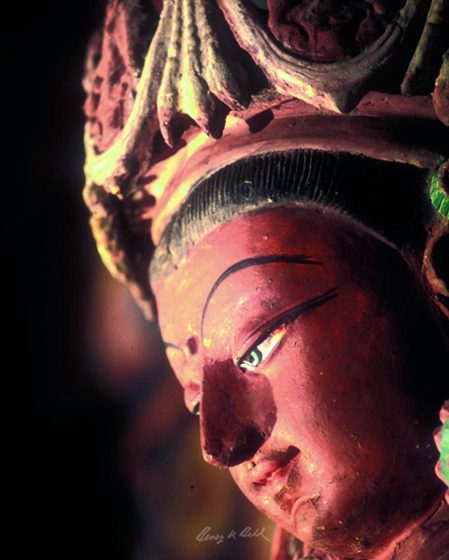Adoration of deities

Benoy K Behl
The word “Puja” has sometimes been misinterpreted, by European writers, as “prayer”. Others have understood it correctly to mean “adoration”. Indic deities are adored, with incense, water, milk, flowers and through music and dance. The purpose of the philosophic path is for us to be able to see the truth beyond. To lose our egos and our concerns in the material world. To rise up in awareness, to see the beauty of all that there is around us, to see that all is divine and therefore divinely beautiful…to lose ourselves in adoration of that beauty.
There are no gods in the early philosophic vision of India. There are deities: deities who are the personifications of concepts and qualities. These qualities are within us and by looking upon the deities brought to us in art, by meditating upon these, we awaken those fine qualities. When we are filled by that grace, there is no space left for base desires and pain: we have become that deity.
What survives today of the early art of India is only a small fraction of what would have been created. Yet it consists of such vast numbers of monuments and sculptures that it staggers the mind. The corpus is gigantic and spread to every corner of the subcontinent.
Each sublime work of art which survives is a mirror, to show us the best qualities within us. It is an opportunity to gain peace even in the midst of the turbulent world around us.
The deities of Hinduism have evolved from the Vedic era (2nd millennium BCE) through the medieval era (1st millennium CE), regionally within Nepal, Pakistan, India and in Southeast Asia, and across Hinduism’s diverse traditions. The Hindu deity concept varies from a personal god as in Yoga school of Hindu philosophy, to thirty-three major deities in the Vedas, to hundreds of deities mentioned in the Puranas of Hinduism. Illustrations of major deities include Vishnu, Lakshmi, Shiva, Parvati, Brahma and Saraswati. These deities have distinct and complex personalities, yet are often viewed as aspects of the same Ultimate Reality called Brahman. From ancient times, the idea of equivalence has been cherished for all Hindus, in its texts and in early 1st-millennium sculpture with concepts such as Harihara (Half Vishnu, Half Shiva) and Ardhanārīshvara (half Shiva, half Parvati), with myths and temples that feature them together, declaring they are the same.

